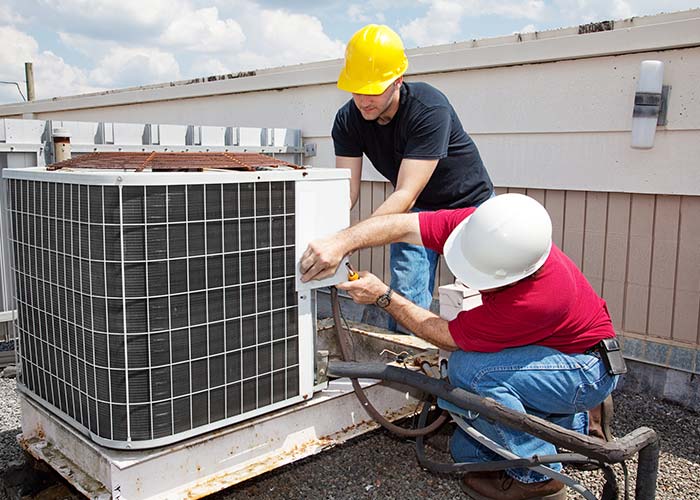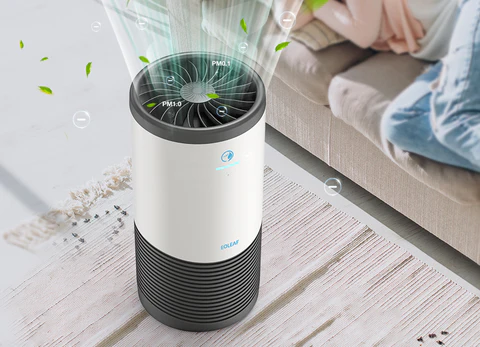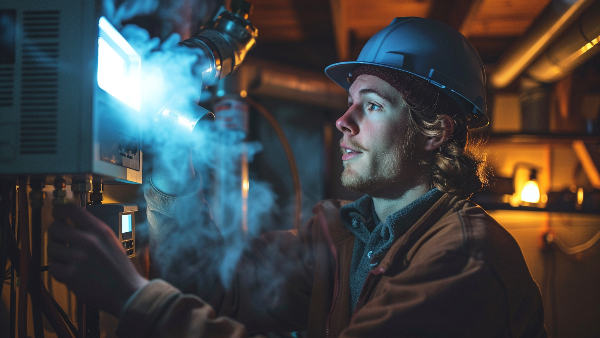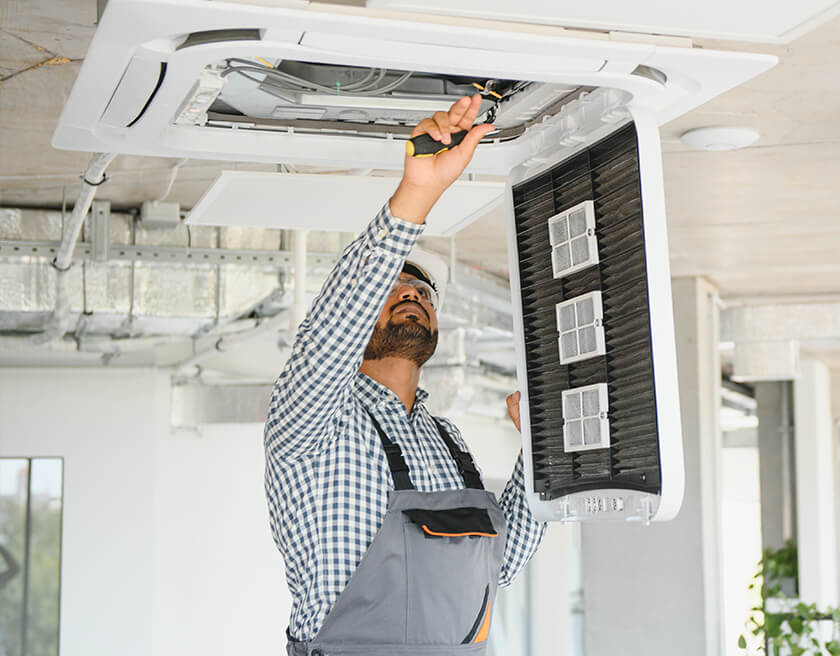Smart Thermostats for Texas Homes: Comfort, Savings, and Control
Introduction
Texas homeowners know that keeping a house comfortable year-round is no small task. With summer heat often stretching well above 100°F and humidity that lingers even into fall, HVAC systems work overtime to maintain livable conditions. But that comfort comes at a cost — both financially and environmentally. According to the U.S. Energy Information Administration, Texans spend nearly 20% more on cooling than the national average.
The solution? Smarter control. Smart thermostats are revolutionizing how homes across Texas manage temperature, humidity, and energy use. These Wi-Fi-enabled devices go beyond simple temperature programming; they learn your habits, adjust automatically, and even communicate directly with your HVAC system to optimize performance.
In this guide, we’ll explore how smart thermostats can help Texans achieve maximum comfort, reduce energy bills, and gain more control — all while keeping their HVAC systems in top shape.
🔗 Related: How Regular AC Maintenance Saves Texas Homeowners Hundreds Each Year
Why Smart Thermostats Are a Game-Changer for Texas Homes
In Texas, cooling accounts for the largest portion of household energy use. Traditional thermostats require manual adjustments or simple timed programming. Smart thermostats, however, automate this process using machine learning, geolocation, and real-time weather data.
For example, if you typically leave for work at 8 AM, a smart thermostat will recognize the pattern, adjust your HVAC system accordingly, and reduce output when no one is home. When you’re on your way back, it pre-cools your space — ensuring you walk into a comfortable home without wasting energy during the day.
According to Energy.gov, homeowners can save up to 10–15% annually on heating and cooling by simply using a smart thermostat properly. In Texas, where HVAC systems often run nine months of the year, those savings can quickly add up.
🔗 See also: Preparing Your HVAC System for Texas Heatwaves
How Smart Thermostats Work
Sensors, Wi-Fi, and Learning Algorithms
A smart thermostat connects to your home Wi-Fi network and uses sensors to track occupancy, temperature, and humidity levels. Over time, it learns your household’s patterns — when people are home, asleep, or away — and adjusts automatically.
Most models include smartphone apps that allow you to monitor and control your HVAC system from anywhere. Advanced options even integrate with Amazon Alexa, Google Assistant, or Apple HomeKit, giving homeowners voice control over comfort settings.
Integration with HVAC Systems
Smart thermostats don’t just control temperature; they optimize your HVAC’s performance. For central AC systems, heat pumps, or ductless mini-splits, they monitor run times, air circulation, and humidity. When paired with a high-efficiency unit, they can reduce energy consumption without sacrificing comfort.
Learn how pairing smart thermostats with energy-efficient systems multiplies savings in Energy-Efficient HVAC Upgrades: What’s Worth It in 2025?
The Benefits of Smart Thermostats for Texas Homeowners
Energy Efficiency and Cost Savings
In Texas, where AC runs nearly year-round, efficiency is everything. Smart thermostats use algorithms and historical data to limit energy waste while keeping your home cool. They also produce detailed energy reports showing where you can cut costs — and many utility companies now offer rebates for installing one.
The Energy Star program estimates that smart thermostats can save an average of 8% on utility bills. For a typical Texas household, that could mean $150–$200 in annual savings.
Comfort and Climate Adaptability
Smart thermostats monitor outdoor conditions and adjust cooling or heating cycles accordingly. On humid days, some models will prioritize dehumidification, ensuring your home feels cooler even at a higher temperature setting.
Multi-zone thermostats like the Ecobee Premium use room sensors to even out temperature differences between floors — a common issue in larger Texas homes.
Remote Access and Smart Home Integration
Gone are the days of returning to a stifling home. With remote access, you can adjust your thermostat from your phone — perfect for Texans who commute long distances or travel often. Integration with other smart devices like fans, blinds, and purifiers enhances comfort while improving indoor air quality.
Maintenance Alerts and System Health Monitoring
Many smart thermostats can detect irregular system behavior and send maintenance alerts directly to your phone. For example, if your AC is running longer than usual or airflow drops, you’ll receive a notification before the problem becomes costly.
That proactive monitoring can extend the lifespan of your system — and when paired with professional service from Alex’s Air, you can ensure your HVAC runs efficiently all year.
Best Smart Thermostats for Texas Homes in 2025
1. Nest Learning Thermostat (Google)
A market leader for years, Nest adapts to your schedule automatically and uses geofencing to detect when you’re home or away. It also offers humidity control, energy reports, and compatibility with most HVAC systems.
2. Ecobee Smart Thermostat Premium
This high-end model includes built-in Alexa, air quality monitoring, and advanced zoning capabilities through remote sensors — perfect for large homes in humid climates.
3. Honeywell Home T9 Smart Thermostat
Known for its reliability and easy interface, the T9 offers smart zoning and accurate temperature control via wireless sensors.
4. Amazon Smart Thermostat
An affordable, simple option that integrates directly with Alexa. It’s an ideal starter model for renters or smaller households.
Smart Thermostat Installation: DIY or Professional?
While some smart thermostats are marketed as DIY-friendly, installation can get tricky — especially with older HVAC systems that lack a “C-wire.” Incorrect wiring or configuration may cause short cycling or system failure.
That’s why professional installation from Alex’s Air is the safest route. A certified technician can ensure compatibility, connect Wi-Fi and smart home integrations, and calibrate the thermostat to your HVAC system’s exact specifications.
Ready to upgrade? Schedule a smart thermostat installation with Alex’s Air today.
Maximizing the Benefits of Your Smart Thermostat
Keep your thermostat connected: Firmware updates improve security and performance.
Use geofencing: Allow your device to automatically switch modes when you leave or arrive.
Review energy reports: Adjust your schedule based on real data to achieve the best balance of comfort and cost.
Integrate humidity control: In humid Texas climates, coupling your thermostat with a dehumidifier can boost comfort and efficiency.
Common Mistakes to Avoid
Even the smartest thermostat can’t save energy if misused. Common errors include:
Constantly overriding automatic schedules.
Ignoring humidity calibration settings.
Disabling “eco” or learning features.
Allowing your thermostat to operate autonomously will yield the best long-term efficiency — and ensure your HVAC system runs optimally.
The Future of Smart HVAC Technology in Texas
Smart thermostats are just the beginning. In the coming years, HVAC systems will integrate fully with AI-driven optimization, renewable energy grids, and predictive diagnostics. Texans who invest in connected systems today will be well-positioned for rebates, smart grid incentives, and future savings.
Expect to see thermostats that respond to real-time utility rates, automatically balancing comfort and cost during peak pricing hours — a huge benefit during Texas’s summer heatwaves.
Conclusion: Smarter Comfort Starts Here
A smart thermostat isn’t just a convenience; it’s a key investment in your home’s comfort, efficiency, and long-term HVAC performance. With the right model, Texas homeowners can enjoy automated climate control, improved air quality, and noticeable savings on every bill.
If you’re ready to take control of your comfort and energy use, reach out to Alex’s Air — your trusted HVAC experts serving Texas homes with smart, sustainable solutions.






